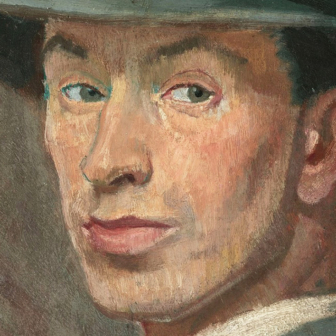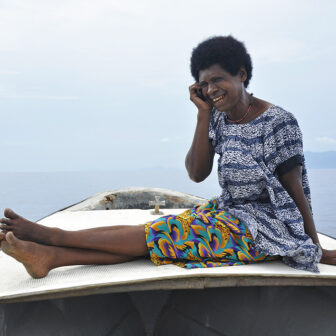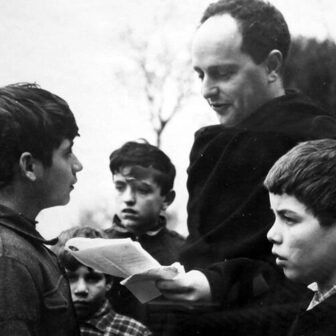Gay Men’s Working Lives, Retirement and Old Age
By Peter Robinson | Palgrave Macmillan | US$99 | 291 pages
By any standards, Melbourne sociologist Peter Robinson has been a remarkably prolific scholar. His major achievement has been to use a technique that has been widely deployed by scholars of the gay world — the life-course interview — to go to places untouched or neglected by others. One of the most important of these fields, and the one that featured in his first book, was old age. It is among his most admirable qualities as a scholar that he is unflinching in his critical appraisal even when contemplating an era that in many respects — perhaps most respects — has been a positive one for gay men, and certainly much more positive than the repression and secrecy that came before it. In that earlier work, he showed how the premium the gay community placed on youth and attractiveness could have a darker side for those who could no longer conform to its ideals.
In this new book, which completes his trilogy on the life course of several generations of gay men in Australia, he is again in largely uncharted territory. Few scholars have brought together the gay community and the world of work. Early in the book, he recalls how, when he was younger, he wondered what all those young gay men beginning a stretch of London clubbing at 11pm on a Monday night did for a living. Could they really all be hairdressers — he was referring to a common stereotype of gay employment — who had the following day off?
Certainly, the world of work was not terribly conspicuous in the dominant images of the gay community that emerged in the 1970s and 1980s. Gay liberation forged the notion of a political identity based on homosexuality, but it had little specifically to say about work, beyond the reality that men and women who publicly identified as gay — or were “outed” by the police or the media — rightly feared workplace discrimination or even dismissal. The gay commercial culture that emerged in the 1970s and was flourishing by the time AIDS hit in the early 1980s constructed gay men as consumers, rather than as producers or workers.
Interestingly, one author who did attend to these matters a long time ago, if only in passing, was Humphrey McQueen, who provides the foreword for this latest book. Back in the mid 1970s, in an essay on “Rewriting Textbooks,” McQueen criticised the portrayal of male homosexuality by Australian writers. “What is needed,” he argued, “is the recognition that homosexuality is not confined to the exceptionally gifted or to the biologically half-baked. Instead, we’ll need textbooks that show that the plumbers next door, who play reserve grade soccer, and eat out of cans because they can’t cook cordon bleu,” might be gay. I don’t think Peter Robinson introduces us to any plumbers or reserve grade soccer players in this book; to be fair, cordon bleu chefs don’t feature all that prominently either. But he has certainly taken up the challenge that McQueen issued more than forty years ago.
Here we see gay men earning a crust, to use a saying that might only be instantly recognisable to Robinson’s older and middle cohorts. And we also find them in retirement, as well as planning, or not planning, for life after paid work. Robinson is a brave man: he even asked some millennials whether they had started planning for their retirement. As ever in his books, the answers tell us something about the lives of the men concerned, even when they are young people who can barely yet conceive what life might be like as “an old gay man,” to borrow from the title of a chapter from Robinson’s first book.
The sociologist Ken Plummer uses the term “shrewd” to describe Robinson’s commentary in this book, and that’s the word that often occurred to me, too, as I read through it. What I like most about his work is that he is alive to both the particularities of the gay experience as well as what is shared with others — that is, with all of us who work, and form relationships, and grow old. He locates his work with great skill in a space that can be easy to overlook when working on sexuality. The sexual revolution invited us to think of sexuality as the core of identity; Robinson acknowledges its claims, yet also resists the assumption that once we grasp an individual’s sexuality, we can then go on to understand pretty much everything else we might want to know about them. This is difficult work; a balancing of theory, history and the complexities of experience as captured — however imperfectly — through the interview.
Gay Men’s Working Lives, Retirement and Old Age is not primarily a study of workplace discrimination against gay men, although it deals with that theme. Robinson tells the story of one of his informants — a gay man living and working in New Zealand — that is awful enough in terms of the workplace bullying he experienced in two jobs decades apart. Other interviewees occasionally reported bullying or harassment, too, and one had to leave his job as a teacher in the 1950s because he feared that a policeman was trying to blackmail him after an arrest for loitering with intent.
But what is striking about these stories is that the intersection of gay identity and experience with the world of work has had much more subtle effects than can be captured in a practice such as bullying or blackmail. Gay men’s experience of the world of work is sometimes different from that experienced by heterosexuals; or rather, Robinson shows that it contains a potential for difference that is realised to a different degree in different historical periods and different work situations.
To take just one example: Robinson has been one of our subtlest commentators on “coming out” — something that he shows might occur not once but often repeatedly across a life course. A gay man might have come out to friends but there’s also family and — as he shows here — there’s the workplace; indeed, as men change jobs — and many of his interviewees changed both occupations and jobs many times across their lives — there’s the question of “coming out” each time.
For most of us, work is an opportunity for sociability and relationships, but in many workplaces there is still a widespread assumption of heterosexuality. Work can therefore be socially isolating for gay men; a pressure point rather than an expression of their identity in its fullness. And just as men from the older cohort among Robinson’s informants “could not,” as he puts it, “share the fraternal bonds of heterosexual masculinity,” homophobia continues to affect the lives of gay men in an era of anti-discrimination legislation.
Robinson also turns his attention to life after paid work. Some of those now entering their fifties and sixties and contemplating retirement — if they’re not retired already — spent an earlier part of their life imagining that they would not live until middle age, let alone old age. Until the arrival of anti-retroviral drugs in the mid 1990s, planning for retirement and old age seemed rather pointless for people living with HIV-AIDS; but these men have had to adjust to the reality of a much longer life than they expected. As Robinson points out, this could be a difficult adjustment for men who had reconciled themselves with death. As one of his interviewees told him, “Dealing with mortality was hard but moving from mortality to longevity has been harder.”
For these men and others who are old, or thinking about when they get old, there are genuine and understandable worries about a loss of control over the conditions of one’s own life. Of course, the heterosexual elderly often have similar fears. But gay men face the possibility of landing in a homophobic environment — especially considering the role of churches in providing aged care — in a setting perhaps devoid of congenial male company, one that might even force them to return to the closet for the sake of a peaceful life.
We apparently don’t yet have gay retirement homes, or gay aged-care facilities, in this country. One of Robinson’s informants frankly sets out his objection to living in a home with women, a view that Robinson concedes “might distress gay-friendly women who like to think homosexual men are empathetic, cuddly versions of their husbands.” For all its achievements, he suggests, the gay community has not yet been able to deal adequately with the challenges posed by old age. Again, he is the friendly critic, and his cool appraisal doesn’t falter in considering these difficult matters.
Like the best sociology and the best history of sexuality, this book also tells us a great deal about the wider world in which these men have lived their lives. Peter Robinson traces a story from the time after the war when opportunities for secure work — backed by a decent social safety net — were widespread, through the more precarious world bequeathed by the end of the long boom in the 1970s. He points to a conjuncture that, so far as I’m aware, has not been discussed enough in work on gay men: that the emergence of gay liberation coincided with the coming of more troubled economic times.
Then came HIV-AIDS: many gay men who entered the caring professions did so in work of value to the gay community itself, work that could be seen as effecting social and political change, although the experience was not in every case happy. One man reported bullying while employed on an AIDS project in a workplace staffed by other gay men. The caring professions — defined broadly — remain important to many younger men but they are less likely to work specifically among gays. Of course, for men across all of Robinson’s cohorts, work was also simply work — a way of making a living, of making ends meet. He found this attitude not only among blue-collar workers or those doing low-paid jobs, but also among some of the well-off. But it became less common over time; his younger men place greater stress on the creative aspects of work.
We meet a diverse group of workers, from the rather poor to the very wealthy. There is one man who moved from a London toy shop to the travel industry to teaching travel and tourism in higher education before training as a counsellor and becoming a professional drag queen in New Zealand. He reflected that if he’d been straight, he’d probably have spent his life “with seven kids” — and presumably a wife — “working on a dairy farm.” Yet Robinson also introduces us to an eminent Sydney-based judge, now retired, a man with deep interest in human rights including those of LGBTI people, who has had a partner for more than forty years.
At least in developed countries, there is a growing legal recognition of such relationships. But it remains remarkable that, quite apart from its own ban on same-sex marriages, Australia has also refused to acknowledge valid marriages performed in countries such as Britain, the United States and even New Zealand. Robinson comes to same-sex marriage late in the book, and he has some concerns about it, worrying over its “homogenising” aspects, its “designer-gaydom”, and its ideal of the gay man as a “pseudo-straight.” “Gay marriage,” he suggests, “is a nice easy way to appease homophobes and attract the support of gay-friendly straights” but the reason some gay men hesitate over it — and Robinson here clearly includes himself — “is that it seems like just another example of having to take on the accepted ways of straights-ville instead of the straight world being asked to accept gay men and their ways.”
As always in Robinson’s work, it’s a dance of sameness and difference, and it provokes us to look at the world in new ways, to question easy liberal assumptions about the meaning of progress and the basis of the good society. What more could one ask for in a scholar and intellectual? ●




